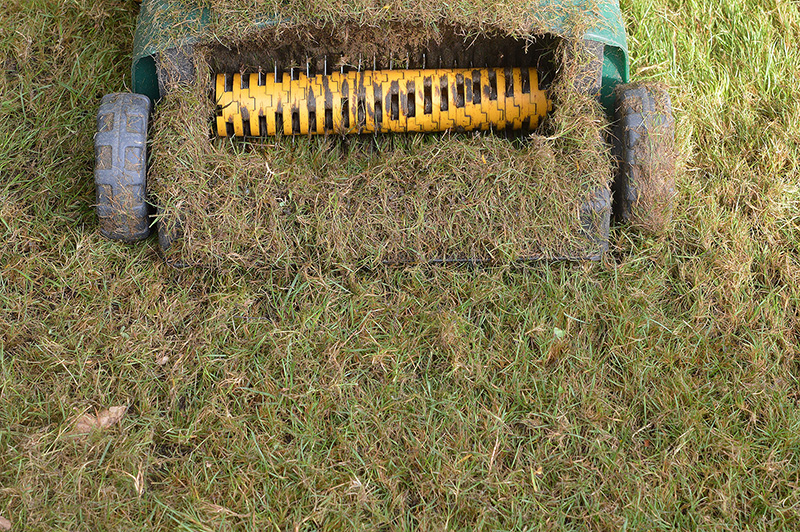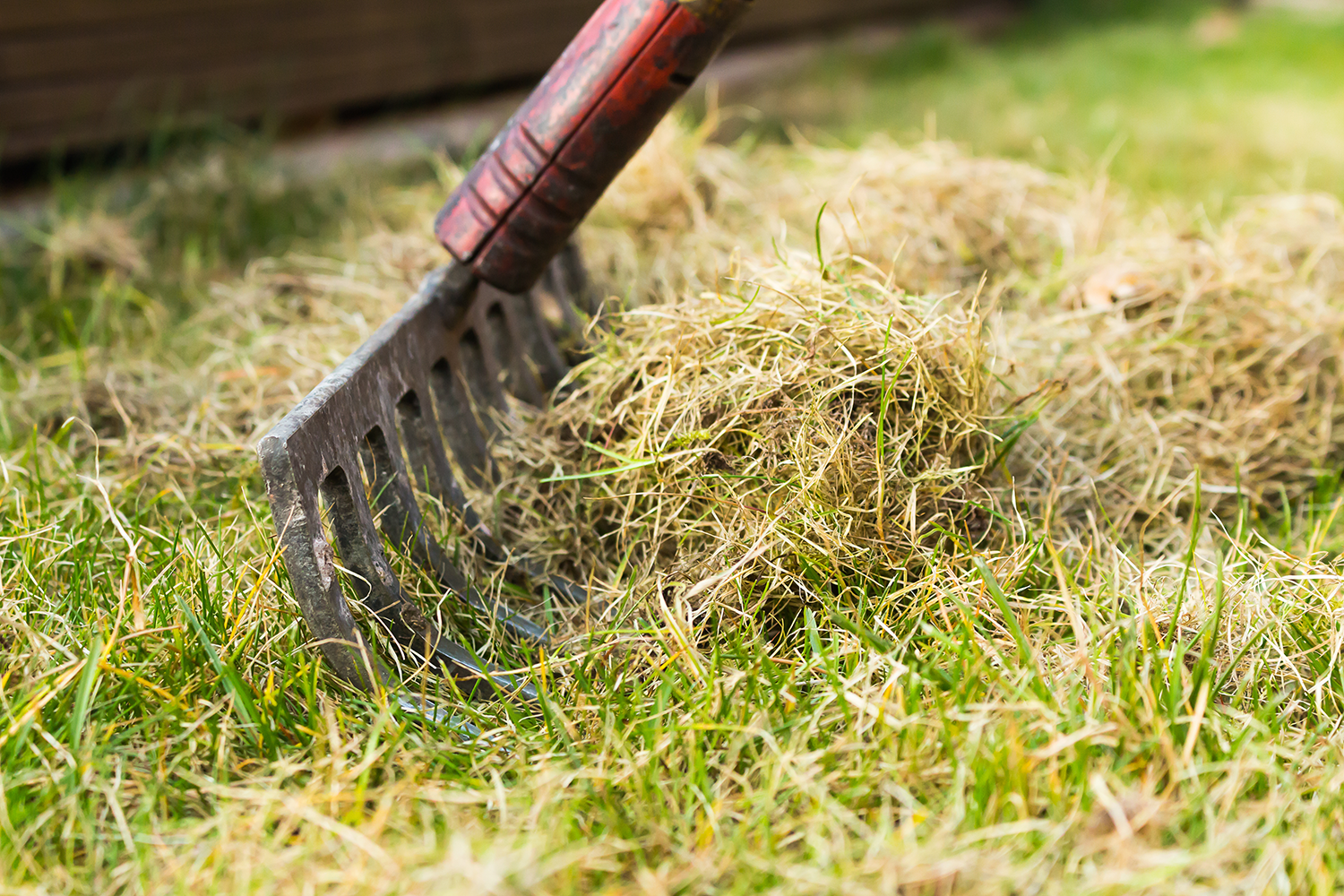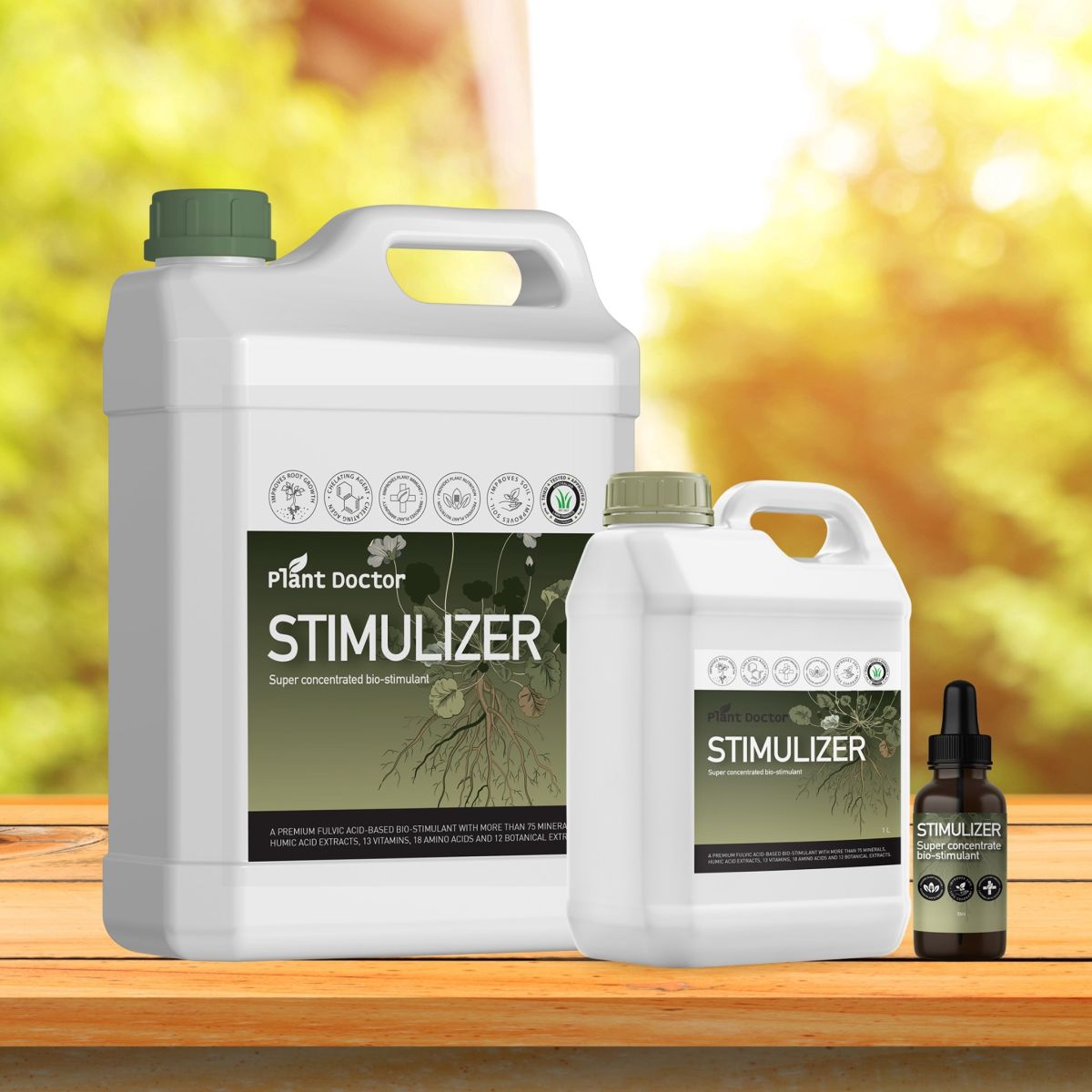Date Posted:11 October 2022
De-thatching - it's an essential part of lawn care - but what is it and how do you go about it? We tackle all of these questions in our latest blog.
Spring has officially sprung, so it’s time to have a good hard look at your lawn and get started on grass renovations to ensure your turf is de-thatched and looking snatched for Summer.
What in the world is thatch?
During the Winter months, it’s natural for lawns to develop a layer of dead organic matter, known as thatch – excessive roots and stems that have developed within the profile of your grass from an over-production of organic matter which hasn’t broken down.
There are benefits to having a thatch layer. It helps to moderate soil temperature, retains moisture during warm months and adds nutrients to the soil. However, the key is moderation as too much thatch can cause unwanted drama for you turf.
 Why is de-thatching important?
Why is de-thatching important?
Thinning out thatch in the lawn (de-thatching) clears away the thick layer of dead grass and organic debris and opens up the lawn surface, allowing for improved nutrient and water intake.
Thatch growth over 25mm effectively creates a barrier which impedes the ability for nutrients, water, air and sunlight to penetrate down to your soil base and into the root system. If you’re going to apply Seaweed Secrets or Nature’s Soil Wetter – you want to get the best results!
By reducing thatch, you will help feed your lawn and prevent waterlog in roots by allowing proper drainage and decreasing the risk of fungal issues. De-thatching also cuts through stolons and rhizomes, or lateral stems, to encourage new growth.
When should you de-thatch your lawn?
Spring time is the optimum period for a good de-thatching session, but exactly when in Spring depends on the type of turf you have, as warm and cold-season grasses should only be thinned once their active growth period is over. Typically, warm-season turf can be thatched in late spring to early summer, and cold-season turf should be done in early spring.
Common warm-season grasses include Zoysia, St. Augustine, Bermuda, Bahia and Centipede. Common cold-season grasses include Kentucky bluegrass, rough bluegrass, fescue, and ryegrass.

It’s important to note that de-thatching should only be done a couple of times a year and attempting to dethatch your lawn too late into the growing season means your lawn won’t recover over winter.
How to start?
There are a few different approaches to removing thatch build up from your lawn.
Put your mower on a low setting. By gradually reducing the height of your lawn, it will reduce the thatch layer. However, avoid doing this in cooler months as you will cause significant damage to your lawn and it won’t be able to recover.
A dethatching rake is one of the easiest and less invasive ways to remove thatch build up. As you are raking, the tines dig in and pull the thatch and dead matter out from within the grass. If you have a substantial thatch layer, you may need to look at a more disruptive method.
Dethatching machines, such as a vertical cutter or verticutter, make light work of removing the thatch layer. This can be a good option if you have a large lawn or if the thatch layer is especially thick and hasn’t been tended to for a while.
 Post de-thatching lawncare
Post de-thatching lawncare
After dethatching your lawn, it will be looking in pretty poor shape. Make sure you rake up all the loosened debris, remove any leftover lawn clippings and apply a quality fertiliser, such as our Lawn Lovers Bundle. Apply this weekly, using the Stimulizer at double the rate for 3-4 weeks to help breakdown leftover thatch. Once the new growth has started to break through you can cut your applications back to fortnightly. (Monthly in dormancy).
Once the fertiliser is applied, make sure you give your grass a good soaking and follow this up for next couple of weeks to help reduce the risk of burning.
First time owning lawn. Gave the team at plant doctor a ring and they supplied me with a wealth of information. Products turned up quickly.
Will definitely be getting more 8 weeks difference been using stimulizer, activ8mate, soil wetter, seaweed secrets and champion fertiliser. Was super fast delivery.
Only have great things to say about Plant Doctor. Organic products and a competitive price, fast shipping and easy to contact with questions. Have had great results with the special mix for lawns, and my plants (indoor and outdoor) love the seaweed secrets. I am excited to test out some of the animal products soon!